Architectural lighting is becoming more accessible to the general public and, as such, the amount of options are growing for anyone wishing to improve the quality of their indoor experience.
We’ve put together a selection of some noteworthy New Zealand lighting designs of late, including the work of Aotearoa’s best design houses and international favourites, across all types of lighting from pendants to sconces and everything in between.
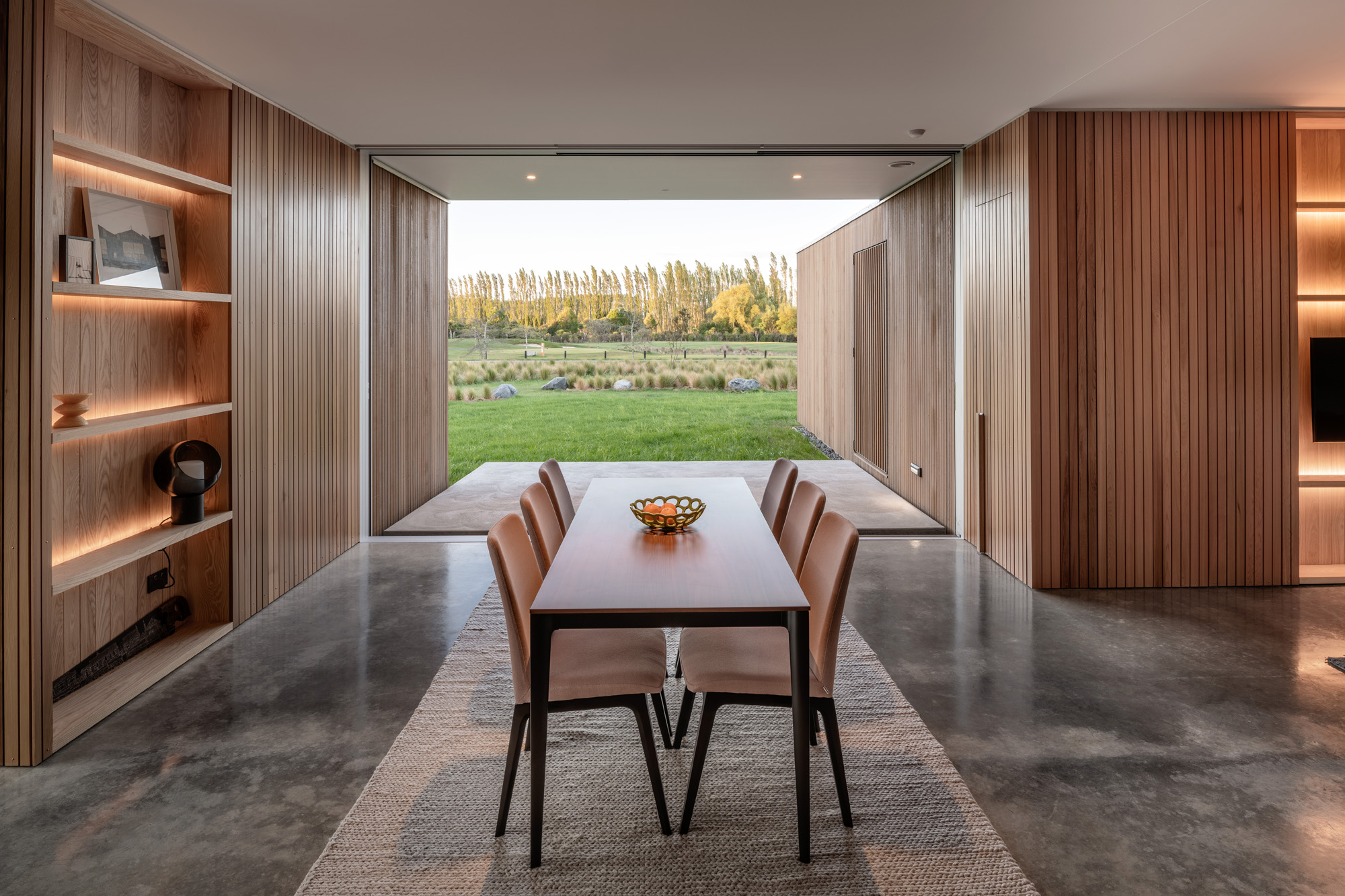
Statement lighting: How to choose lighting for the living room
Selecting the perfect lights for a space can be a difficult task, and the best lighting for one house is unlikely to work in the next, but there are some general rules of thumb to consider.
The first thing to think about is: what do I want to achieve? Will the lights become the main feature of the space? Or are they designed to be a minimalist part of the overall interior design, allowing other features to come to the fore?
What is their function? Are they both decorative and sculptural, as well as being the main source of illumination in the space, or is the lighting you are choosing going to be part of a wider lighting scheme?
Then, consider material, design and size. What would suit this particular room, and how will it fit with the rest of the decor? Talking to your architect or interior designer is often a helpful way to consider different perspectives on the space and design options.
Designer pendant lighting case study: The Dune House by Cheshire Architects
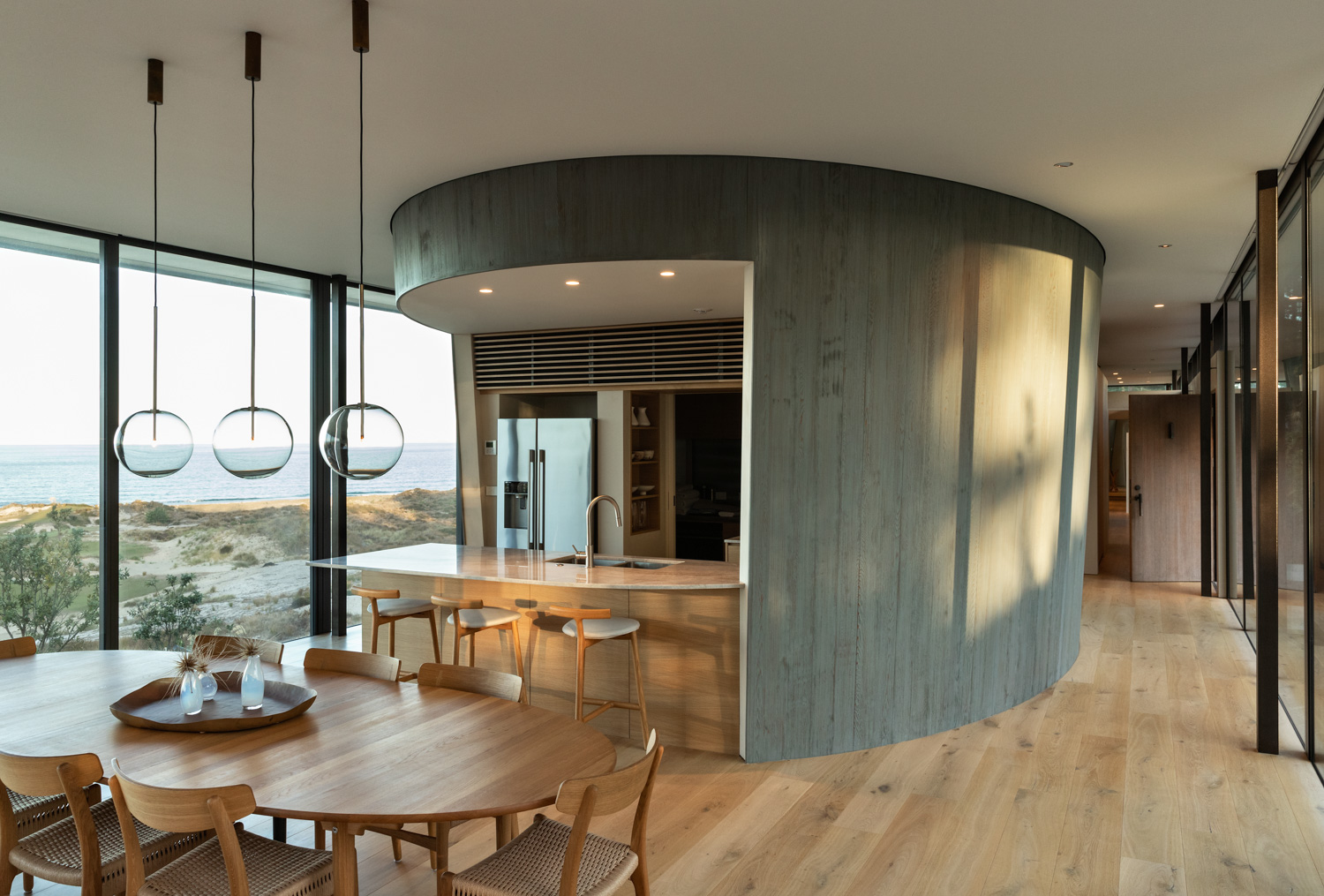
The three pendant lights hanging above the dining table in this coastal home in Mangawhai are transparent blown glass spheres, allowing the purity and minimalism of the architecture to shine through rather than be blocked by more solid shades or pendant materials. Nonetheless, they retain personality and interest while also making the height of the dining area more personable.
Architect Pip Cheshire says of the house: “I am interested in taking things away; while taking things away everything keeps getting better but if you take too much it just falls apart. You have to get to that edge, the edge of that cliff and stay there. For me, designing is removing things.”
It is in that vein that this particular choice of pendant lights works so well. Set in the Tara Iti gated community — a sort of golf and architectural Disneyland — the house borders the remnants of a pine forest and the Tom Doak–designed links. Undulating dunes — some sandy, others covered in fescue grass — extend to the ocean’s edge, while on the horizon Hen Island bobs in the misty distance.
Here, the views are paramount, and by specifying transparent globe pendants, in this case the Galloti & Radice Bolle Sola pendants by Massimo Castagna, the blown glass adds another element of interest, and a forum for viewing reflections of the sea and dunescape beyond through the sculptural forms.
Sculptural pendants: Choosing the perfect pieces for contemporary homes
Architecturally designed homes are bespoke, and speak to the individuality of the owners, the site, and the brief. The result of choosing to work with an architect means the home you end up moving into will be unique and a testament to the skill of the professionals who brought it to life.
To successfully furnish an architecturally designed house, and design a suitable lighting scheme, there needs to be a clear vision; one which incorporates the nuances of the architecture, materials and other key factors such as the setting, the function of individual rooms, and how they will be used.
Often, less is more with pendants especially if they are to become a statement piece – or, in many cases, a piece of art in their own right.
Case study: Closeburn Lodge by Mason & Wales Architects and Trinity Interior Design
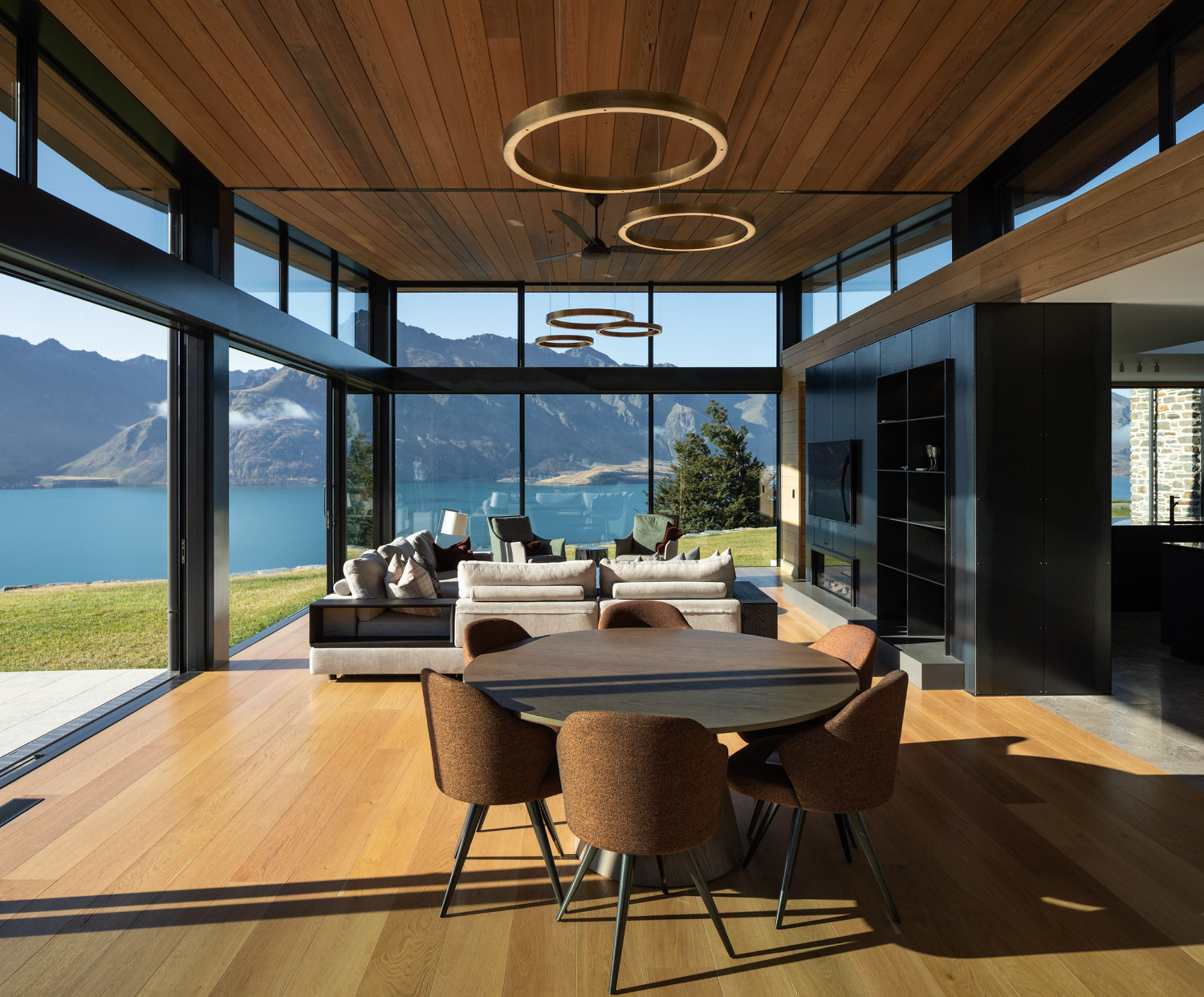
This Queenstown home, perched above Lake Wakatipu, is mostly built from local schist. Its main social room, however, is a more contemporary expression of modernism: it is defined by a steel frame and ample glazing to allow the views of the picturesque New Zealand mountains to be the hero. To avoid competing with this impeccable indoor outdoor flow but also add an element of sculptural drama, the interior designers used Light Ring Horizontal designer pendants by Massimo Castagna for Henge. According to Henge they are a “pendant energy saving LED with warm light, formed with rings of various sizes and types of illumination”.
This choice allows the striking living area to come into its own; the pendants adding an elegant element of drama and luxury yet allowing for the materiality of the space to remain the hero, alongside the confrontingly beautiful landscape the house opens up to.
Case study: Minimalist sconce lighting – Pegasus House, Dalman Architects
Concrete interior walls can be perceived as cold unless they are either textured… or well lit.
Pegasus House by Dalman Architects is an example of using lighting to soften and add theatricality to an otherwise cold material. Kub Wall lights (from Lighthouse Lighting) make up the sconce lighting, and are wrapped in extruded aluminium, which allows the effect and angle of the light to be changed and manipulated depending on positioning. It allows for uplighting and downlighting while maintaining the symmetry and tactility of in situ concrete.
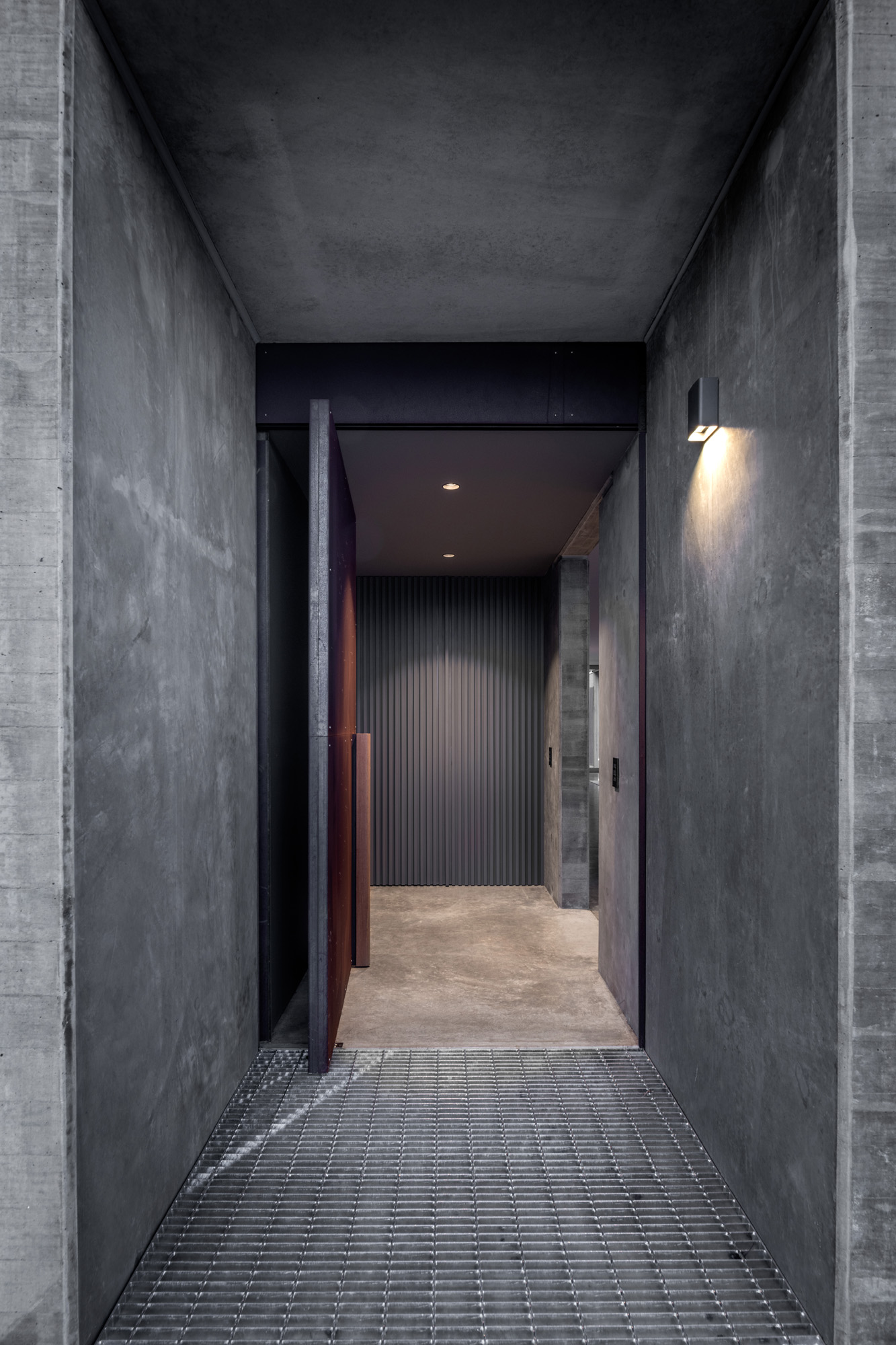
What to look for when selecting a floor lamp
Options for floor lamps are plentiful and the task of finding the ones that best suit your needs can be confusing. Can you create mood lighting with a floor lamp?
Are floor lamps good for reading? Is dimmer lighting necessary when selecting a floor lamp? And the all important: what floor lamp suits my interior?
As a rule of thumb, floor lamps can be seen as the jewellery of any interior lighting. They shine and sparkle, they attract attention and, in the best of cases, they create warmth and are effective task lighting or for reading. Given the extensive range of floor lamps, they are excellent pieces of design with which to express individualism and style. As such, the form and materials of these gems are as important as the technical and practical needs.
Whether marble floor lamps are in style or whether sculptural floor lamps are better than minimalist ones depends entirely on the extended interior palette. Here are some suggestions.
Stylish floor lamps: Textural and sculptural

In 2018, HOME and Fisher and Paykel’s Design Awards shone the spotlight on New Zealand’s best new designs. Among them was Simon James’ Circus Floor Lamp; a sculptural design that took the highest accolade due to its handmade, jewellery-inspired, interlinking rings which exude elegance.
“We wanted to celebrate the beauty and simplicity of the circle,” says Scott Bridgens of Resident.
Decorative, sculptural and a definite conversation-starter, this lamp is made of brushed brass rings hanging from a matt-black base with a small footprint. The lamp includes a single brass button which acts as a textural moment of interaction between the user and the object: “It gives the user a unique physical interaction with the light,” continues Bridgens.
How to select the right recessed lighting
One of the advantages of recessed lighting is the fact that the bulbs are buried in the ceiling, therefore unobtrusive and allow for uninterrupted ceiling planes and a cleaner interior design and architecture.
Given the increase in LED power and miniaturisation of their componentry (heat diffusing ceramics are getting better at their job) – the need for complex ceiling cavity installation is decreasing. What used to be individual, high diffusion recessed ceiling lamps (with incandescent bulb and/or canisters) that illuminated vast floor spaces are now being condensed into clusters of small, highly technical and powerful LED bulbs that are more versatile and use less electricity.
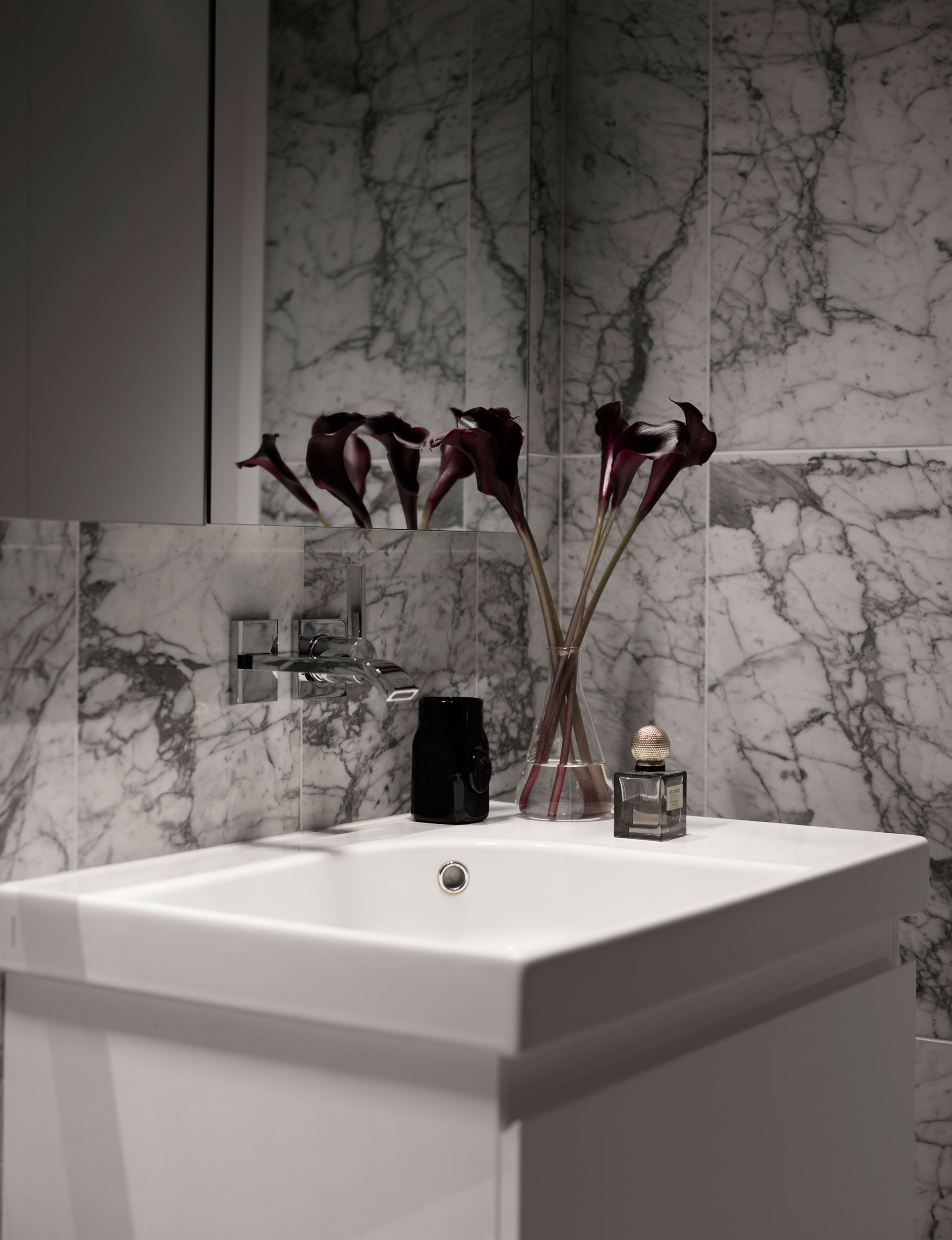
What to consider before selecting recessed lighting
The advice of a lighting expert and installation by a certified electrician is necessary when it comes to recessed lighting. Nonetheless, it pays to be well informed about what to ask and what to look out for before you approach the experts. Here are a few things to consider.
What can recessed lighting be used for?
Versatility is key when it comes to recessed lighting. You can light whole rooms (from small to big). You can use LED recessed lighting to spotlight artworks, architectural gestures or bookshelves. Recessed lights can be used as task lighting for areas like reading nooks, food or drink preparation areas, or as mirror lights.
What type of recessed lighting is right for my project?
LED recessed lighting is usually sold in four basic tones and power outputs ranging from 2700 to 5000 Kelvins. The tones are: warm, soft, natural/neutral, cool, and daylight. The best recessed lighting for the home is generally either warm or soft with, occasionally, garages or basements using cool. Advancements in LED technology mean that dimmers and RGB-coloured lights are now available and can be controlled via remote control or apps.
What types of trims are needed on recessed lighting?
Since recessed lights are buried into ceiling, wall or floor cavities, the trim is the thin ‘lip’ that extrudes from those cavities. The reason this matters is because different types of trims have different, practical roles that range from amplifying the light beam, reducing glare, offering water impermeability for use in wet areas, or pivoting the bulb to offer variety and directionality.
What is track lighting?
As the name suggests, these are lights that are suspended from the ceiling on a track which provides electricity to each individual unit. Better known as lighting for art galleries, track lighting is preferred by anyone seeking modularity and the ability to redirect the beam of light with ease. This freedom is at the core of track lighting: if you tend to move furniture, artwork or other furnishings often, then track lighting allows for the illumination of these objects to also be changed easily and without the constant need for electricians.
Are there different types of track lighting?
In a nutshell, track lighting involves a straight rail – often suspended from rather than built inside the ceiling – carrying the wiring which powers individual light heads. Modern iterations of this include more experimental rail layouts such as wavey or flexible rails that can be manipulated into different shapes. New technologies include magnetic tracks: i.e each head is attached to the rail magnetically meaning each can be moved, removed, and attached with incredible ease.
Track lighting heads
Being the most visible part of track lighting means the heads are where this style of lighting can be at its most expressive. Rounded backs, square units, streamlined designs… the current market options for this are endless. The heads also regulate the type of light so be mindful of whether you want flood, medium or spot depending on the usage. Modern technologies also allow you to dim and regulate each individual head via apps so you can specify highly customisable tracks that illuminate different, adjacent objects in the type of light most appropriate for their materiality.




